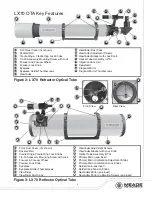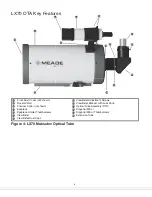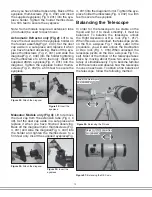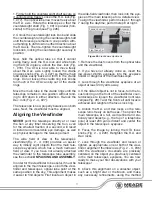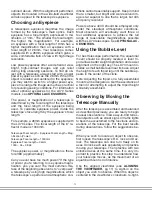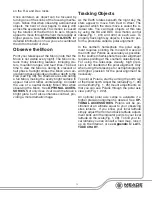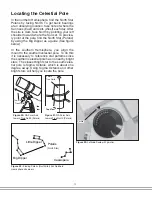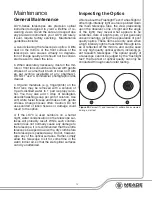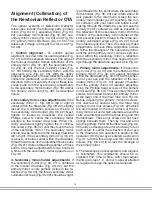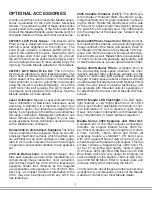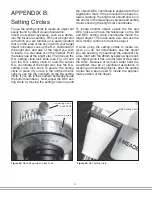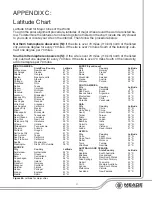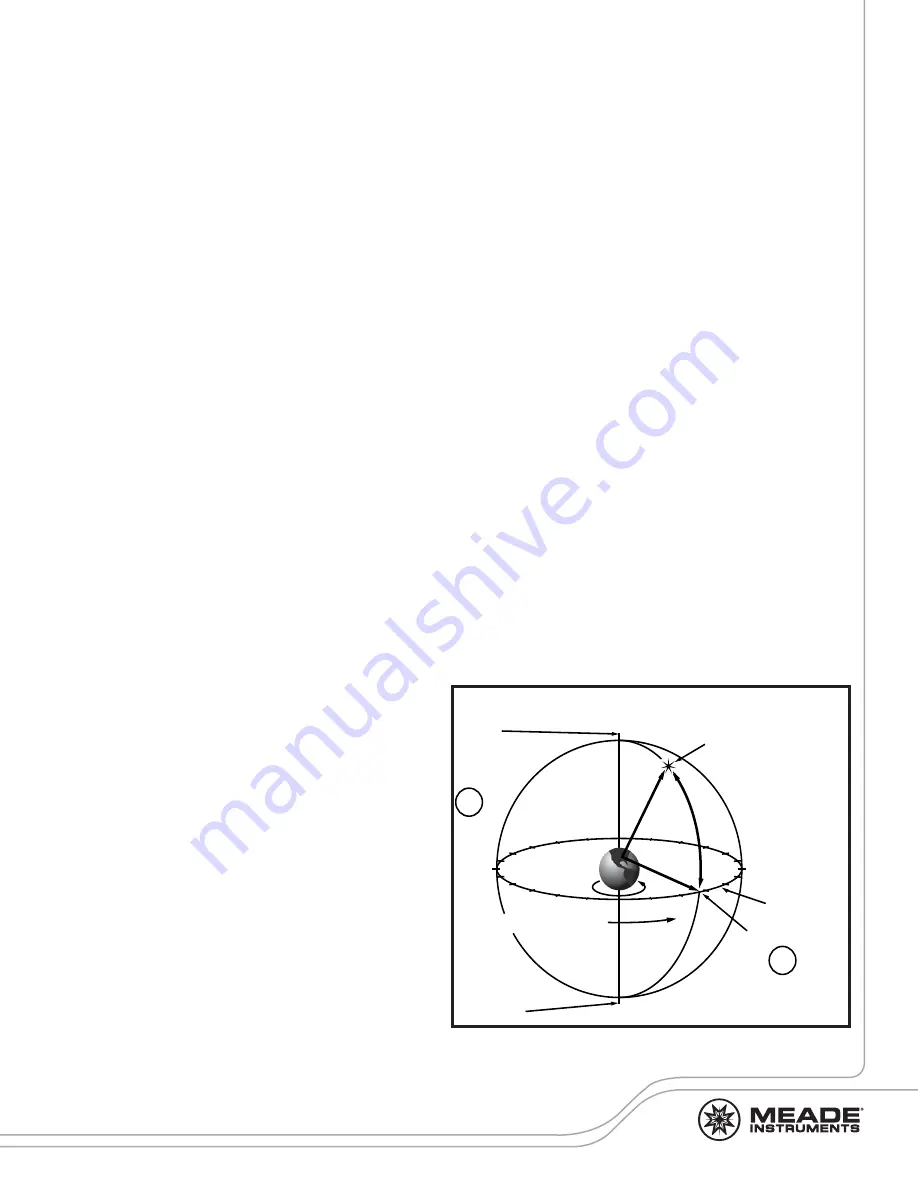
19
APPENDIX A:
Celestial Coordinates
A celestial coordinate system was created that
maps an imaginary sphere surrounding the
Earth upon which all stars appear to be placed.
This mapping system is similar to the system of
latitude and longitude on Earth surface maps.
In mapping the surface of the Earth, lines of lon-
gitude are drawn between the North and South
Poles and lines of latitude are drawn in an East-
West direction, parallel to the Earth’s equator.
Similarly, imaginary lines have been drawn to
form a latitude and longitude grid for the celes-
tial sphere. These lines are known as Right As-
cension and
Declination.
The celestial map also contains two poles and
an equator just like a map of the Earth. The
poles of this coordinate system are defined as
those two points where the Earth’s north and
south poles (i.e., the Earth’s axis), if extended to
infinity, would cross the celestial sphere. Thus,
the North Celestial Pole (1, Fig. 41) is that point
in the sky where an extension of the North Pole
intersects the celestial sphere. The North Star,
Polaris is located very near the North Celestial
Pole. The celestial equator (2, Fig. 41) is a pro-
jection of the Earth’s equator onto the celes-
tial sphere. Just as an object’s position on the
Earth’s surface can be located by its latitude and
longitude, celestial objects may also be located
using Right Ascension and Declination. For ex-
ample, you could locate Los Angeles, California,
by its latitude (+34°) and longitude (118°). Simi-
larly, you could locate the Ring Nebula (M57)
by its Right Ascension (18hr) and its Declination
(+33°).
Right Ascension (R.A.):
This celestial version
of longitude is measured in units of hours (hr),
minutes (min), and seconds (sec) on a 24-hour
“clock” (similar to how Earth’s time zones are
determined by longitude lines). The “zero” line
was arbitrarily chosen to pass through the con-
stellation Pegasus — a sort of cosmic Green-
wich meridian. R.A. coordinates range from 0hr
0min 0sec to 23hr 59min 59sec. There are 24
primary lines of R.A., located at 15-degree inter-
vals along the celestial equator. Objects located
further and further East of the zero R.A. grid line
(0hr 0min 0sec) carry higher R.A. coordinates.
Declination (Dec.):
This celestial version of lat-
itude is measured in degrees, arc-minutes, and
arc-seconds (e.g., 15° 27’ 33”). Dec. locations
north of the celestial equator are indicated with
a plus (+) sign (e.g., the Dec. of the North ce-
lestial pole is +90°). Dec. locations south of the
celestial equator are indicated with a minus (–)
sign (e.g., the Dec. of the South celestial pole is
–90°). Any point on the celestial equator (such
as the constellations of Orion, Virgo, and Aquar-
ius) is said to have a Declination of zero, shown
as 0° 0’ 0.”
APPENDIX B: Setting Circles
Setting circles permit the location of faint ce-
lestial objects not easily found by direct visual
observation. With the telescope pointed at the
North Celestial Pole, the Dec. circle (see Fig.
43) should read 90° (understood to mean +90°).
Each division of the Dec. circle represents a 1°
increment. The R.A. circle (see Fig. 42) runs
from 0hr to (but not including) 24hr, and reads in
increments of 10 minutes. Using setting circles
requires a developed technique. When using
the circles for the first time, try hopping from one
bright star (the calibration star) to another bright
star of known coordinates.
Practice moving the telescope from one easy-to-
find object to another. In this way, the precision
required for accurate object location becomes
evident.
14
15
16
17
18
19
20 21
22
23
0
1
12
11
10
9
8
7
5
6
4
3
2
13
Earth’s
Rotation
0 Dec.
South
Celestial
Pole
Right Ascension
Star
Celestial
Equator
-90 Dec.
+90 Dec.
North
Celestial
Pole
(Vicinity
of Polaris)
D
e
c
lin
a
tio
n
1
2
Figure 41:
Celestial Sphere
Summary of Contents for LX70 Series
Page 1: ...1 Instruction Manual LX70 Series German Equatorial Telescopes...
Page 25: ...25 OBSERVATION LOG...
Page 26: ...26 26 OBSERVATION LOG...
Page 27: ...27 OBSERVATION LOG...

